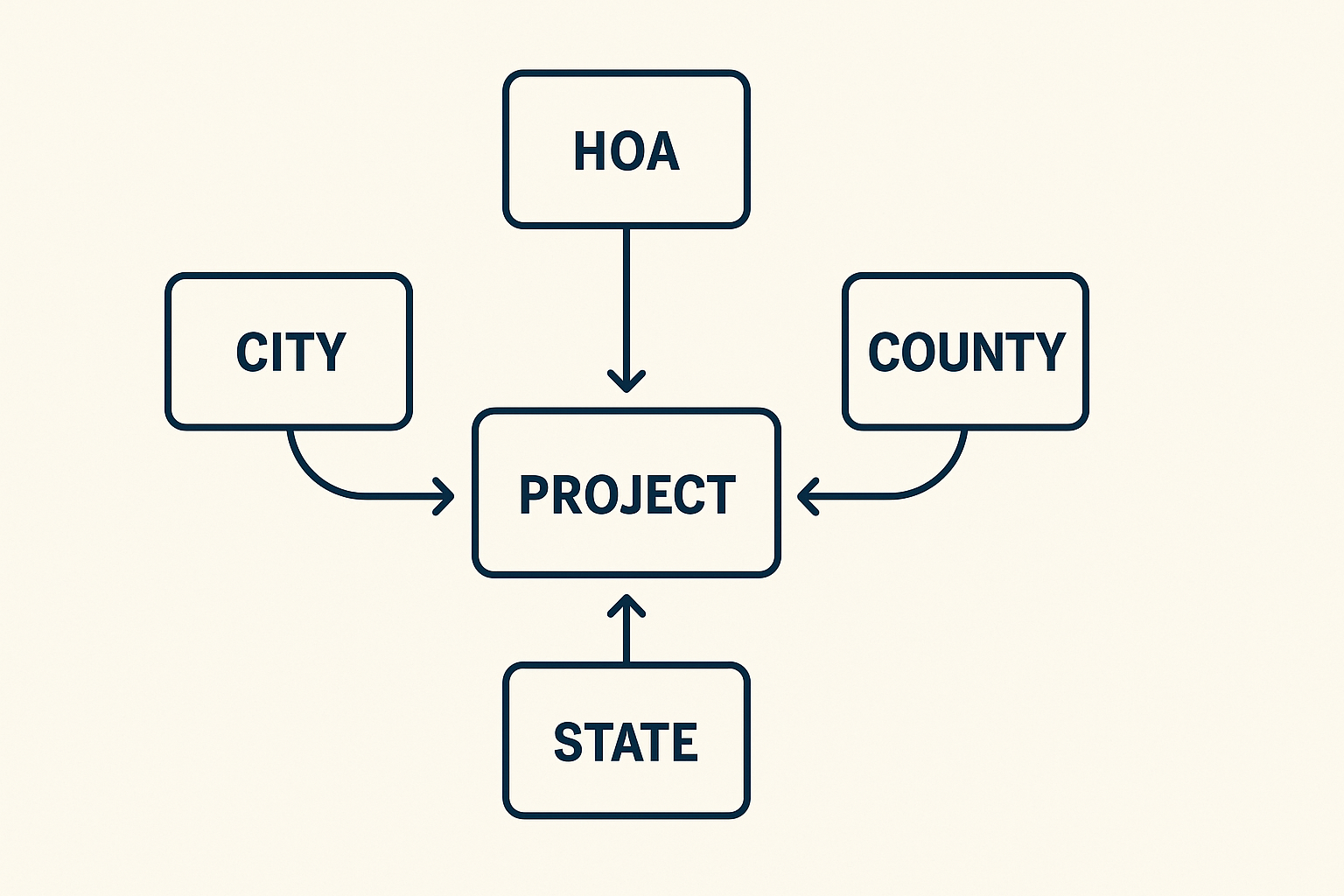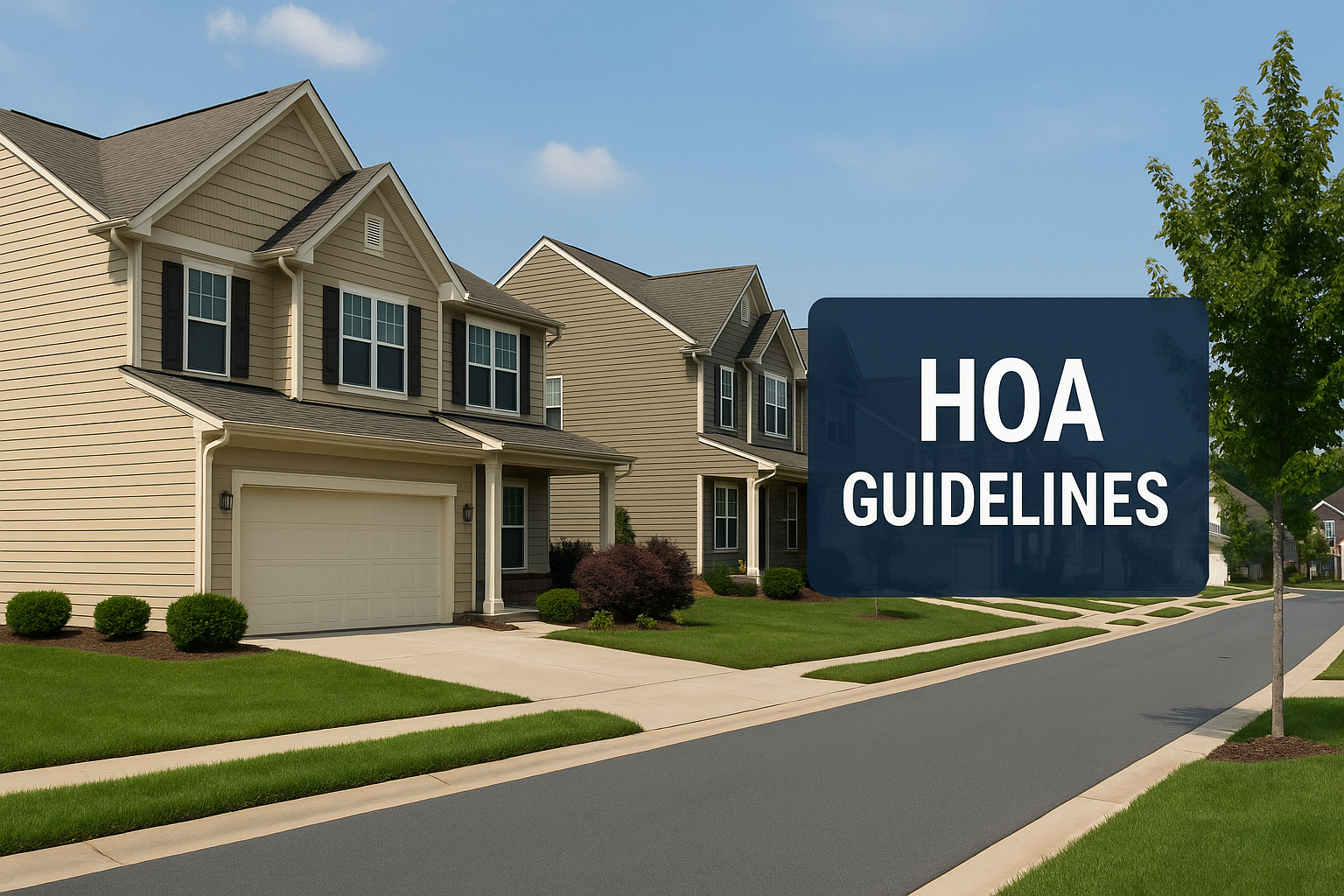Finding the Right Place to File for Permits: A Guide for Additions, Renovations, and New Construction
Whether you're a young adult investing in your first property, a growing family expanding your home, or a retiree designing your forever space, understanding where to file for permits is essential before you begin construction or make assumptions that it is easy (sometimes it is not at all easy and can take months to get your approval). From small residential additions to full-scale commercial developments, securing the proper approvals is a multi-step process that can involve several overlapping jurisdictions.
At Modern Acre Studio, we specialize in helping our clients navigate this process efficiently. With over a decade of experience and a 5-star rating on Google, we understand how to move your project from concept to construction with clarity and confidence.
Why Getting It Right Matters
Filing in the wrong place—or skipping a required approval entirely—can lead to costly delays, fines, or even legal complications. Many property owners are surprised to learn that there is no single “permit office.” Depending on where your property is located, you may need to coordinate with several governing bodies, such as:
A Homeowners’ Association (HOA)
Your City’s planning or permitting department
The County engineering/development office
Occasionally, even the State-level agencies
Understanding this structure is crucial. It's not just about filling out forms — it's about knowing where to submit them.
Where Do You Start?
1. Homeowners Association (HOA)
If your property is a part of an HOA, this is the first place to check. HOAs often have specific guidelines related to exterior changes, fencing, materials, or even roof color. Even if your project complies with city or county requirements, HOA approval is often required before anything can move forward.
How to check:
Review your deed or closing documents
Contact your property management company
Search your subdivision name online
2. Determine Whether You’re Within City Limits
City boundaries are not always intuitive. You might have a city mailing address but still be located outside city limits or within what’s called an ETJ (Extraterritorial Jurisdiction). These distinctions impact who you need to contact.
Ways to check:
Use your City’s and County’s GIS (Geographic Information System) maps
Simply type in the name of the city you are in and add GIS (i.e.: Sugar Land GIS or Fort Bend County GIS)
Check your property tax statement for listed jurisdictions
3. If Outside City Limits, Contact the County
In unincorporated areas, the county often has sole authority over permitting (which makes it SO much easier to deal with permitting). This typically involves coordination with the county’s Engineering Department, Fire Marshal, etc.
For example, we are currently working on a commercial project near Pheasant Creek Drive and Old Richmond Road. Although it’s commonly associated with Sugar Land, the property was not within city limits or the ETJ. As a result, we are coordinating exclusively with:
Fort Bend County Engineering Department
Fort Bend County Fire Marshal
No city permit was needed—but we still had to meet strict drainage and fire code requirements. In this case we are not even utilizing the commonly known International Building Code, but have to adhere to the International Fire Code instead.
(For my local South Texas cities: Richmond, Rosenberg, Houston, Sugar Land, Woodlands, and others, always double check by calling your Cities’ planning/building departments)
4. When State-Level Permits Apply
Though less common for individual homes, state agencies may be involved in cases involving:
Properties near major roadways (TxDOT involvement)
Development in floodplains or wetlands (TCEQ)
Public or commercial facilities requiring ADA compliance (TDLR)
These agencies are generally involved when a project has broader environmental or public safety impacts.
How to Find Jurisdictions and Requirements
You don’t have to guess. Here are practical ways to identify who governs your property and what they require:
Use GIS Maps
Most counties have interactive GIS portals that allow you to input your address or parcel number and view boundaries, zoning, flood zones, and city limit lines.
Search Your County Appraisal or Auditor’s Website
These sites often list jurisdictional authority, zoning designations, and additional overlays (such as historical districts or flood designations).
Visit Local Government Websites
Once you determine the appropriate jurisdiction (HOA, city, or county), look for pages labeled “Permits,” “Planning and Development,” or “Building Services.” These sections often include:
Permit application forms
Submittal requirements
Contact information for planners or permit technicians
Still Unsure? Call Directly
Even the best websites can be outdated or unclear. Calling the appropriate agency can save days—sometimes weeks—of delay. Permitting officials are often able to clarify specific requirements that may not be clearly listed online.
Why Hiring a Licensed Architect Makes All the Difference
Understanding where to file for permits is only one part of the bigger picture. You also need design documents that comply with zoning, code, drainage, and fire regulations. And you need a partner who can advocate on your behalf when navigating multiple agencies.
That’s where we come in.
At Modern Acre Studio, we bring:
Over a decade of experience across residential and commercial projects
A 5-star rating on Google based on consistent client satisfaction
A good understanding of regional permitting requirements
We guide every client through the permitting maze with clarity and integrity—from identifying which agencies you need to contact, to preparing the right documents for approval.
Let’s Simplify the Process Together
If you're planning an addition, renovation, or a new build and aren’t sure where to begin with permits, we can help. You don’t need to navigate this alone.
Reach out to us at Modern Acre Studio. Fill out our quick project intake form or send us an email with a few details (click Here to fill out the form). We'll help you determine which jurisdictions apply to your site and guide you through what comes next—so you can move forward confidently.
Your project deserves a smooth, informed start. Let Modern Acre Studio help you lay the groundwork for success.




